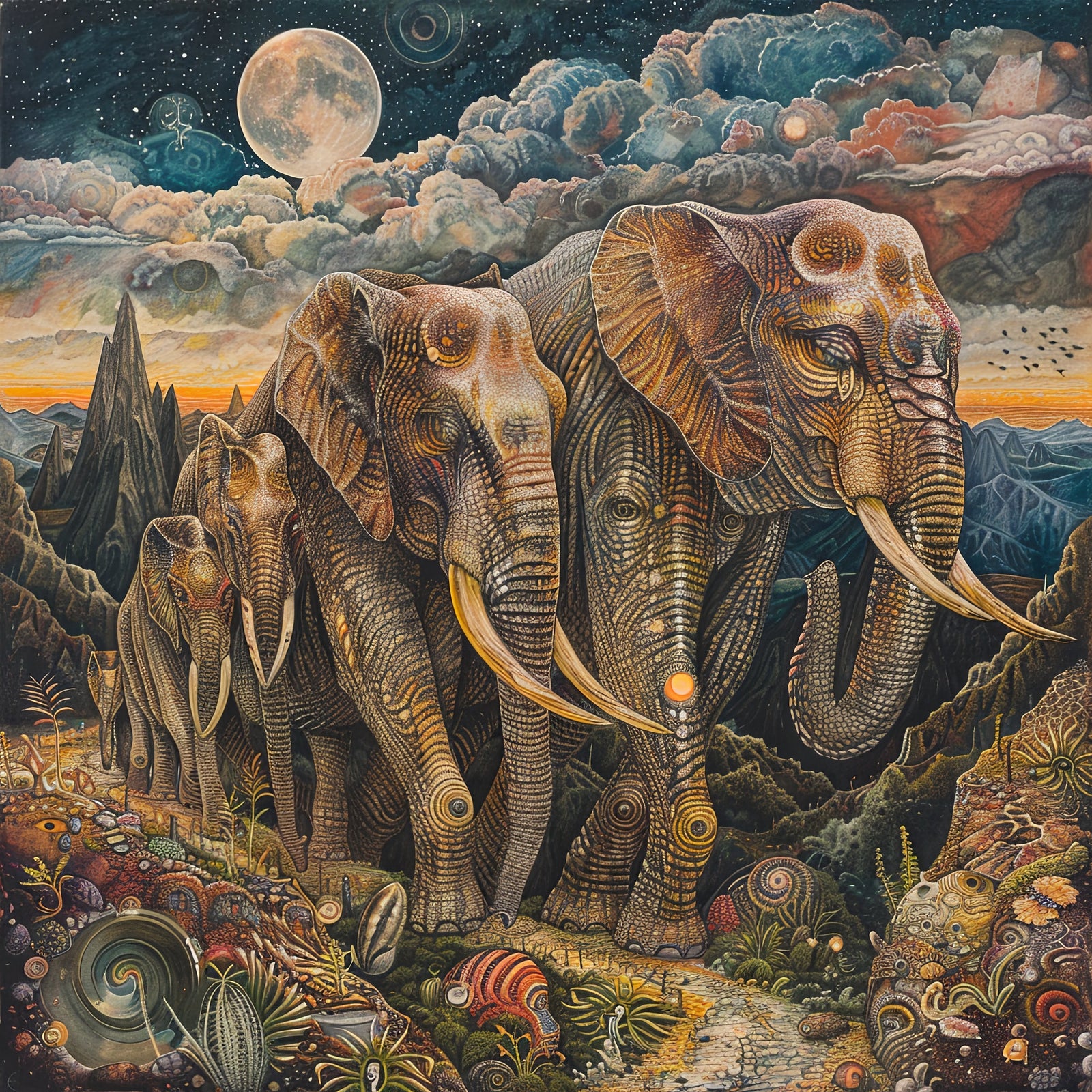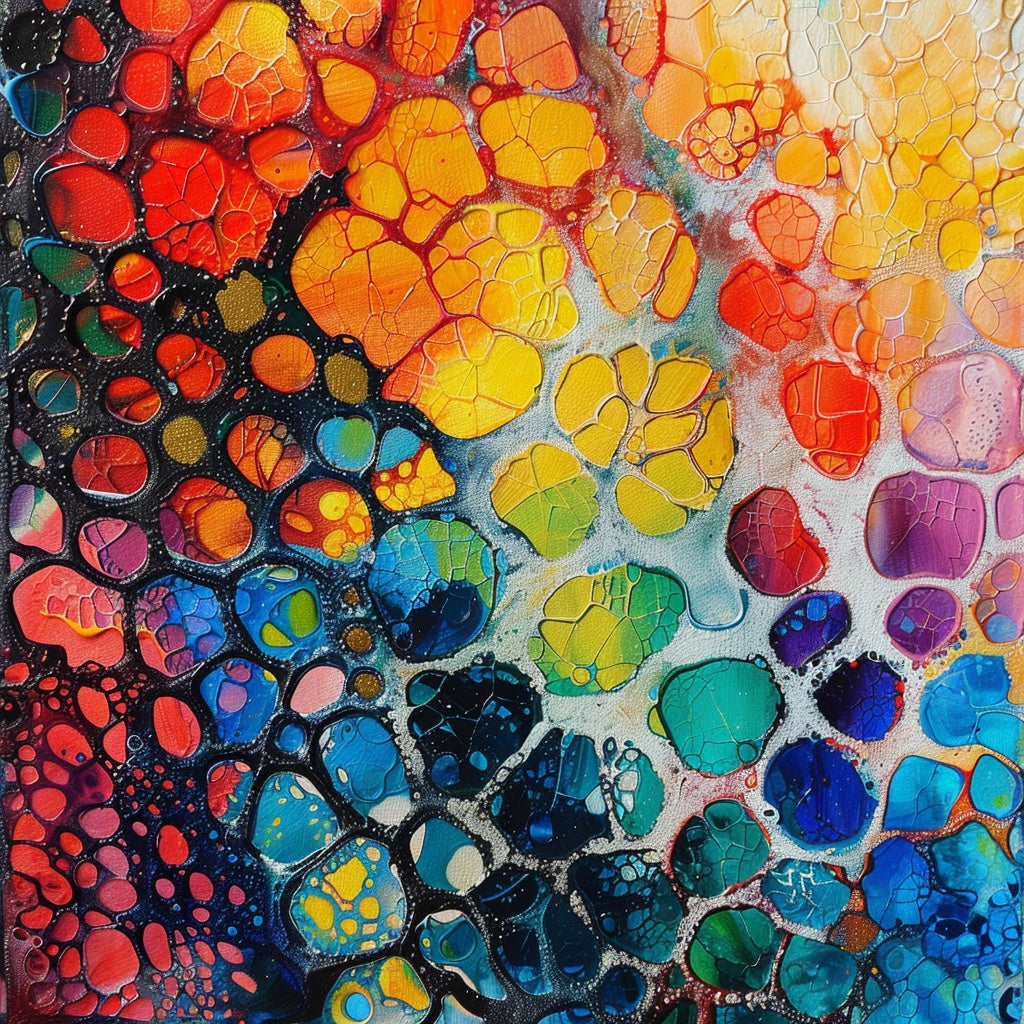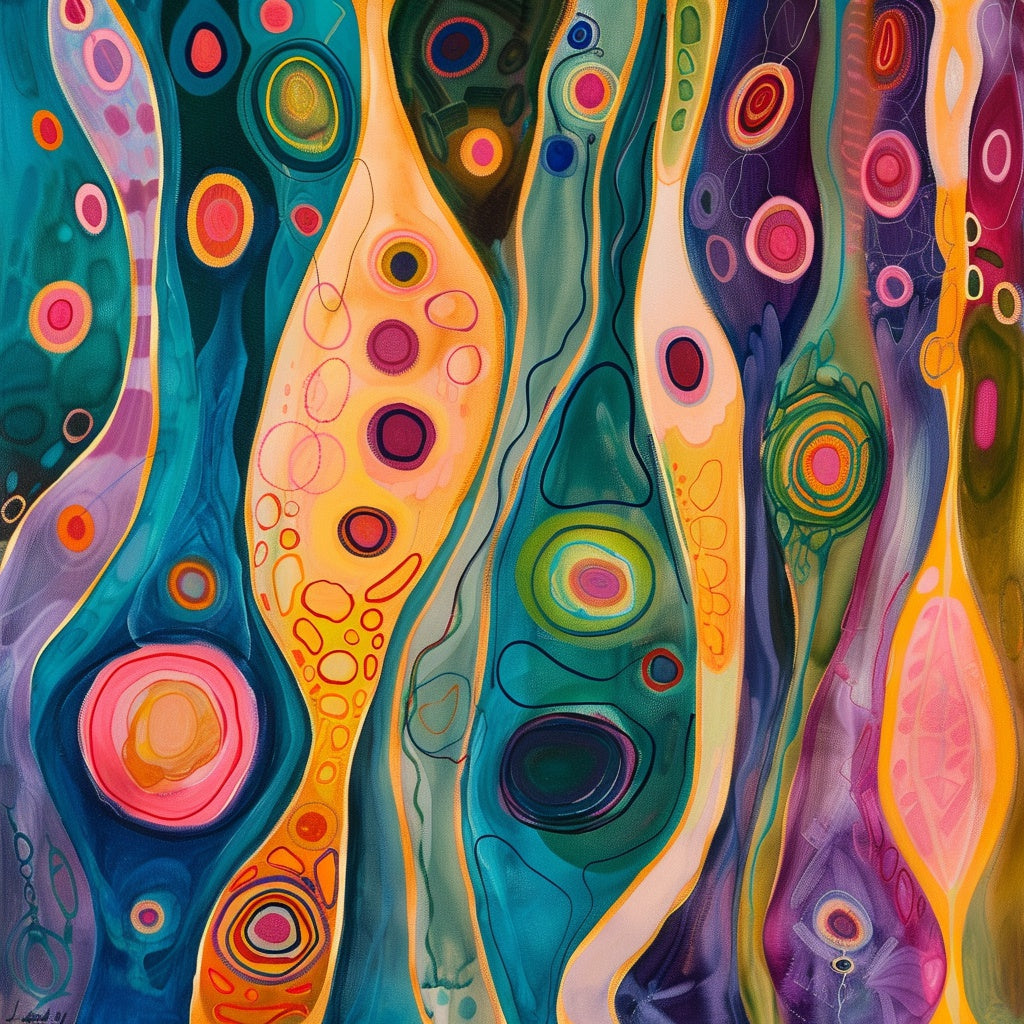AI Art's Reception in the Traditional Art World
Artificial intelligence (AI) is rapidly changing many aspects of human society, and the art world is no exception. The rise of AI art has sparked a debate about its role within traditional art, raising questions about creativity, authorship, and the definition of art itself. This article explores the complex reception of AI art, examining the perspectives of artists, critics, and the public.
Table of Contents
Introduction
Initial Reactions and Varying Perspectives
The Use of AI Tools by Traditional Artists
AI in Art Exhibitions and the Public Eye
Opinions from Prominent Figures in the Art World
The Impact of AI Art on the Art Market
Conclusion: Embracing the Future of Art
Footnotes
Introduction
The emergence of AI art represents a significant shift in the art world, challenging established norms and sparking discussions about the nature of creativity and artistic expression. As AI technology evolves, its impact on art becomes increasingly profound, prompting excitement and concern among artists, critics, and the public. This blog post will delve into the multifaceted reception of AI art, exploring the different viewpoints and analyzing its potential impact on the traditional art landscape.
Initial Reactions and Varying Perspectives
A Mix of Excitement, Skepticism, and Resistance
The initial reactions to AI art within the traditional art world have been varied, encompassing excitement, curiosity, skepticism, and resistance. The novelty of AI-generated art has intrigued many while raising concerns about its legitimacy and implications for human creativity.
Arguments for AI Art
A considerable art community views AI art as a valid form of artistic expression. Proponents argue that AI algorithms, such as Generative Adversarial Networks (GANs) and Neural Style Transfer (NST), can produce unique and innovative artworks that challenge traditional notions of creativity. These tools allow for exploring artistic styles and forms that may not be immediately apparent to human artists, opening new avenues for creative expression.
Mario Klingemann, an AI art pioneer, believes that AI enables the discovery of new artistic expressions by analyzing and reinterpreting existing forms in ways a human might not conceive. For example, the "Next Rembrandt" project used AI to create a new painting in the style of Rembrandt, highlighting how AI can blur the lines between imitation and original creation. This project demonstrates AI's potential to mimic art and generate works deeply rooted in artistic traditions.
Skepticism and Resistance
Despite the enthusiasm, there is strong skepticism and resistance to AI art within the traditional art world. Critics argue that AI-generated art lacks consciousness, intentionality, and the emotional depth associated with human-made art. Art historian Claire Bishop emphasizes that art is not just about aesthetics but also about communication and emotional resonance, which she believes AI currently lacks. This perspective suggests that the human experience, with its complexities and nuances, is crucial to creating meaningful art, and AI, being a machine, cannot replicate this essential element.
The Use of AI Tools by Traditional Artists
AI as an Artistic Tool
While some artists see AI as a threat to human creativity, many have embraced it as a new tool to enhance their artistic practices. AI tools can assist artists in various ways, such as generating initial designs, exploring unconventional ideas, and overcoming technical limitations. This allows artists to focus on thematic depth and emotional resonance, using AI as a collaborator rather than a replacement.
Examples of AI Integration
A survey by the Academy of Animated Art found that 65% of artists have used text-to-image AI for brainstorming new ideas. Artists like Refik Anadol use AI to create dynamic and immersive installations that respond to external stimuli, showcasing AI’s potential for artistic innovation. Anna Ridler uses AI to reveal beauty in hidden data patterns, illustrating AI's ability to uncover new artistic possibilities. These examples show that artists are integrating AI in diverse ways, from ideation to final creation, pushing the boundaries of what is possible in art.
Authorship and Originality
Integrating AI tools in art raises questions about authorship and originality. Many artists who use AI emphasize retaining control over the creative process, using AI as a collaborator rather than a replacement for human creativity. Artists like Amy Karle and Kira Xonorika see AI as a partner in the creative process, highlighting the synergy between human intuition and AI's analytical capabilities. This perspective underscores that human creativity is not diminished but enhanced by AI tools, as AI can augment the artist’s vision.
AI in Art Exhibitions and the Public Eye
Gaining Visibility
AI art has gradually gained visibility in traditional art through exhibitions and auctions. The sale of "Portrait of Edmond Belamy" for $432,000 at Christie's auction house was a landmark event in the recognition of AI art. This event sparked further interest in AI art and its potential to disrupt the traditional art market. It demonstrated that AI-generated works can be considered art and command substantial prices, similar to traditional pieces.
Museums and Galleries
Museums and galleries have begun to feature AI art in exhibitions, showcasing the diverse applications of AI in artistic practices. The Crocker Art Museum's exhibition "AI Am I? ARTificial Intelligence as Generated by Alexander Reben" explored the role of AI in the future of art and daily life. Similarly, the Grunwald Gallery at Indiana University hosted an exhibition titled "Blurring the Lines," which showcased art pieces created or assisted by AI technologies. These exhibitions offer platforms for artists and the public to engage with AI art, fostering understanding and dialogue about its implications.
Visual Characteristics of AI Art
AI-generated art often exhibits unique visual characteristics, such as swirl-like patterns instead of brush strokes. AI can sometimes struggle with realistic human features, particularly hands and fingers. This is due to how AI algorithms process and generate images, which differs significantly from human artistic processes. These visual traits often serve as a signature of AI art, distinguishing it from human-made pieces and sparking curiosity and further discussion.
Public Reception
The public reception of AI art has been generally positive, with a growing number of people expressing interest and appreciation for AI-generated works. A survey found that 56% of those who have seen AI-generated art enjoy it, suggesting that as exposure increases, so might the appreciation for this new art form. The increasing accessibility and visibility of AI art are likely to play a significant role in its broader acceptance.
Opinions from Prominent Figures in the Art World
Artists' Perspectives
The emergence of AI art has prompted diverse opinions from prominent figures in the art world, including artists, critics, and technologists. Sougwen Chung, a contemporary Canadian AI artist, sees AI as a collaborator, exploring the intersection of technology, robotics, and the arts. Refik Anadol, a Turkish-born AI artist, uses AI to create immersive and interactive installations that transform data into mesmerizing visual and auditory experiences. These artists see AI as a powerful medium for pushing the boundaries of creative expression.
Technologists' Perspectives
Emad Mostaque, founder of Stability AI, believes that AI can unlock human creative potential and provide new means for expression. This perspective views AI not as a replacement for human creativity but as an enhancer, opening up new possibilities for artistic innovation.
Concerns and Criticisms
However, there are also concerns about the potential impact of AI on the art world. Kelly McKernan, an artist, has expressed concerns about AI generating images that reflect her artistic style. Hayao Miyazaki, a renowned animator, has criticized AI art for its lack of understanding of human emotion and pain, stating that it is an "insult to life itself.". These criticisms underscore the ongoing debate about the value of human emotion and experience in art and whether AI can replicate this crucial element.
The Impact of AI Art on the Art Market
Democratization of Art
The emergence of AI art can significantly impact the traditional art market in several ways. Some experts believe that AI could democratize art creation by making it more accessible to a wider audience. This could lead to a more diverse and inclusive art world, with new artists and styles emerging from unexpected sources. By making tools more accessible, AI could empower a new generation of artists to create and contribute to the art landscape.
Concerns about Devaluation
However, there are also concerns about the potential for AI-generated art to devalue human artistic skill and saturate the market. The ease with which AI can generate art has led to fears that the value of human skill and creativity will diminish. This concern stems from the worry that if art creation becomes too easy, the value placed on the skill and effort of human artists might decrease.
Financial Impact and NFTs
The financial impact of AI art is already being felt in the art market. AI-generated NFTs have fetched high prices, with the highest-valued piece selling for $1.1 million. This demonstrates the growing digital and AI-generated art market and its potential to disrupt traditional art markets. The high valuations of AI art in the NFT space signify its emerging position as a new asset class in the art world.
AI as a Research Tool
Beyond creating art, AI is also being utilized as a research tool in the art world. AI algorithms can analyze stylistic elements, pigment types, and brushstrokes to assist in the authentication of artworks, potentially revolutionizing art historical research and valuation. While AI can be used to analyze market trends, it's important to note that the art market, particularly the private market, often lacks public data on art sales, making it difficult for AI to make accurate predictions about future values. Thus, AI can enhance the understanding of art and its history, but its predictive capacity regarding market value is limited.
Conclusion: Embracing the Future of Art
The reception of AI art in the traditional art world is an ongoing and evolving process. While there are valid concerns about the potential impact of AI on human creativity and the art market, there is also a growing recognition of AI's potential to enhance artistic practices and democratize art creation. AI has the potential to both preserve artistic traditions and spark entirely new forms of creativity. It can be seen as a new tool that expands the possibilities of artistic expression, much like the invention of photography or digital art.
The evolving definition of art in the digital age will likely involve a dynamic interplay between human ingenuity and the capabilities of AI, leading to new forms of artistic expression and a more diverse and inclusive art world. By embracing a balanced approach, the art world can navigate this new frontier and shape a future where human creativity and artificial intelligence coexist and enrich the artistic landscape.
Footnotes
The Impact of Generative AI on Traditional Artists - Entrepreneurs.hk
Is AI Art Really Art? - Gini Graham Scott - Medium
The Impact of AI on Art: A Comparison with the Invention of Photography - Medium
5 Artists Who Explored AI in Art Before It Was Cool - motiva.art
AI Art Statistics 2024 - Artsmart.ai
AI's Impact on Traditional Art - Creative Flair Blog
AI, Art, and Creativity: Exploring the Artist's Perspective - Salzburg Global
AI Am I? ARTificial Intelligence as Generated by Alexander Reben | Crocker Art Museum
New Indiana University art exhibition "blurs the lines" between AI and man-made art - Indiana University
The Consequences of Artificial Intelligence Made Art - FHNtoday.com
15 AI Artists Who Exemplify the Weird World of AI Art - Unlimited Graphic Design Service
Understanding The Impact of AI Art on Traditional Artists - Haylos & Blooms
Art-ificial Intelligence: Is AI Art Better Than Humans? - The Bird Feed
The Impact Of Artificial Intelligence On The Art World - Forbes



Leave a comment (all fields required)